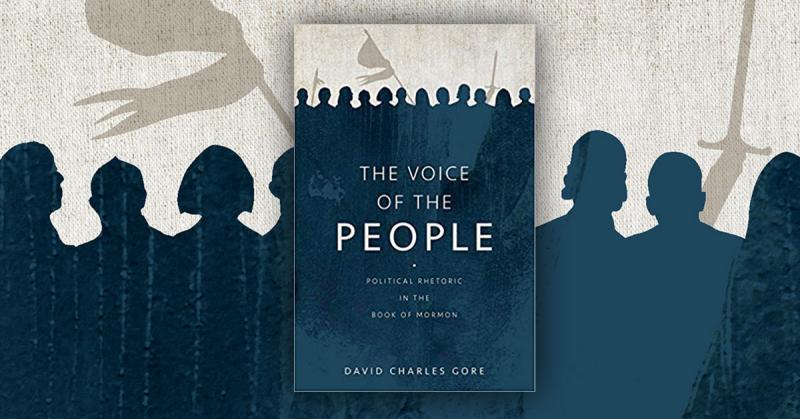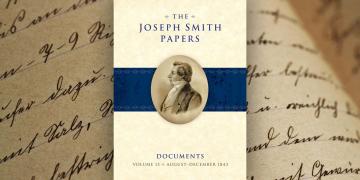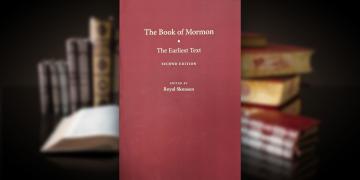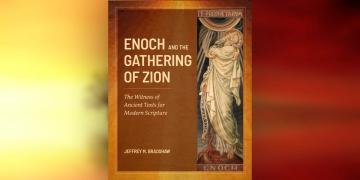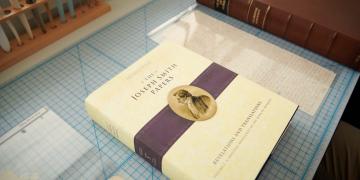You are here
Book of Mormon Central is in the process of migrating to our new Scripture Central website.
We ask for your patience during this transition. Over the coming weeks, all pages of bookofmormoncentral.org will be redirected to their corresponding page on scripturecentral.org, resulting in minimal disruption.
David Charles Gore, The Voice of the People: Political Rhetoric in the Book of Mormon (Provo, UT: Neal A. Maxwell Institute for Religious Scholarship, 2019). 227 pp. $15.95
Mosiah 29–Alma 2 narrate a pivotal moment in Nephite history. This was the period when the Nephites switched from being a monarchy to being ruled by a hierarchy of judges. It was also the period that saw dissenters like Nehor and Amlici put the new Nephite government to the test. What can we learn from reading these chapters carefully? Specifically, what do they tell us about the sort of rhetorical maneuvers that the Book of Mormon authors and personalities used to advocate for their political ideals? What principles can we draw from them and apply to modern politics? These and other important questions are explored in David Charles Gore’s new book The Voice of the People: Political Rhetoric in the Book of Mormon.
Published by the Neal A. Maxwell Institute for Religious Scholarship as the final volume in the Groundwork: Studies in Theory and Scripture series, The Voice of the People “argues that this Latter-day scripture invites readers to cultivate a sober, wakeful approach to political discourse. To eschew self-indulgent politics in favor of a politics oriented toward others. Being with others and being for others is never easy. But by shouldering this work to persuade and be persuaded of the good we can make our political situation more prosperous and more enduring.”
Gore argues that “the possibilities for public discourse presented in the Book of Mormon are couched in a larger theological and religious framework. The Book of Mormon’s overarching conclusion is that the problems our communities face are not strictly political, but religious” (p. 16). In order to capture this religious framework in the Book of Mormon, Gore provides some close inter- and intratextual readings between the Book of Mormon and the Bible and within the Book of Mormon itself. The first two chapters of the book compare King Mosiah’s reforms away from monarchy with the Old Testament prophet Samuel’s move towards monarchy in ancient Israel and the unmistakable effect the discovery of the long-lost Jaredite records had on Nephite ambivalence towards that system of government. As Gore’s analysis shows, the Book of Mormon’s portrayal of Mosiah’s rationale for the move away from monarchy is richly nuanced and shows a keen awareness of the multiple considerations guiding Mosiah’s decision.
Chapter 3 in the book analyzes what exactly resulted from Mosiah’s reforms. Here Gore takes a look at the new constitution devised by Mosiah that installed the system of judges and reformed Nephite laws. Gore observes that “while not a democracy in a constitutional or institutional sense, the government established by Mosiah does call for individuals to check themselves and take responsibility for the public good” (p. 119). Among others, Gore draws from the earlier work of Richard Bushman arguing that Mosiah’s constitution does not show much affinity to modern American republicanism.1 Overlooked, however, is Gregory Dundas’ recent important article further situating Mosiah’s reforms in the context of ancient kingship ideology and so-called “proto-democracies,” under which Mosiah’s ultimately unsuccessful political experimentation with judgeship might be plausibly classified.2
The final two chapters in The Voice of the People look at the Nehorite crisis that quickly put Mosiah’s reforms to the test. Nehor and his disciple Amlici are depicted in Alma 1–2 as some of the most dangerous threats to Nephite sovereignty and righteousness. While their message (especially Nehor’s) were grounded in religious and metaphysical claims, political endeavors, such as Amlici’s ambition “to be a king over the people” (Alma 2:2), were also undertaken by these pretenders. Gore looks at the rhetoric utilized by Nehor and Amlici and contrasts such with the earlier rhetoric of Mosiah and Alma the Younger. Nehor and Amlici are persuasively argued by Gore to be effective narrative foils in Mormon’s portrayal of Mosiah and Alma.
While I found Gore’s book to have many interesting and important insights, one drawback that I could anticipate for average Latter-day Saint readers is that Gore’s writing at times tends to somewhat meander and doesn’t always seem focused. Readers should be advised to take their time with this book and digest it slowly, since Gore covers a lot of interlocking topics that do not always lend themselves to straightforward interpretation.
The Book of Mormon is read best when it is read carefully. In my experience this holds especially true for the chapters covered in The Voice of the People; chapters that I have found especially fascinating. A close reading of these texts reveals that “the political theology in the Book of Mormon . . . invites us yet again to a different way of thinking about ourselves and our communities. It invites us to look on the inward heart rather than on the external trappings of power and wealth” (p. 201). Gore has clearly put in commendable effort to read the text carefully and offers an intriguing and timely way to make sense of how the Nephite record is relevant for us today.
- 1. Richard L. Bushman, “The Book of Mormon and the American Revolution,” in Book of Mormon Authorship: New Light on Ancient Origins, ed. Noel B. Reynolds (Provo, UT: Religious Studies Center, Brigham Young University, 1982), 189–212.
- 2. Gregory Dundas, “Kingship, Democracy, and the Message of the Book of Mormon,” BYU Studies Quarterly 56, no. 2 (2017): 7–58.
Subscribe
Get the latest updates on Book of Mormon topics and research for free


